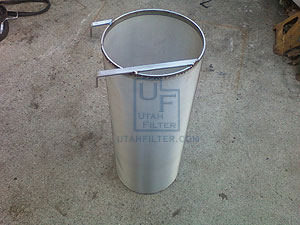Hi Y'all,
So I have been brewing all grain 5 gal batches for some time now, and am noticing that I have a lot of trub after my boil (or its not trub and I'm doing something wrong).
I use hop pellets and wirlfloc in most batches, and I have an immersion coil that I use to chill (30 minute chill time). I rack out the beer from the trub after i remove the coil and whirlpool and wait 10 minutes. I drain until the wort looks like brains and starts becoming cloudy.
I have noticed a large amount being left behind, and I wanted to know why i have so much. Today i measured 1.75 gal of trub and liquid mixed in with it.
Is there anything i can do to compact the trub so it holds up less liquid?
Thanks for the help!


So I have been brewing all grain 5 gal batches for some time now, and am noticing that I have a lot of trub after my boil (or its not trub and I'm doing something wrong).
I use hop pellets and wirlfloc in most batches, and I have an immersion coil that I use to chill (30 minute chill time). I rack out the beer from the trub after i remove the coil and whirlpool and wait 10 minutes. I drain until the wort looks like brains and starts becoming cloudy.
I have noticed a large amount being left behind, and I wanted to know why i have so much. Today i measured 1.75 gal of trub and liquid mixed in with it.
Is there anything i can do to compact the trub so it holds up less liquid?
Thanks for the help!







